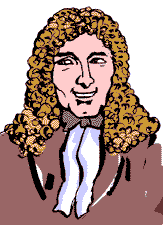
Dimdima
Online Children's Magazine from India

Dimdima
Online Children's Magazine from India

Antony van Leeuwenhoek, 1632–1723, was a Dutch student of natural history and maker of microscopes. As apprentice to a draper, he would use a variety of lenses to examine cloth. It was probably this that led to his interest in lens making.
He assembled over 247 microscopes, some of which magnified objects 270 times. With these microscopes he would examine everything. In the course of his examination he discovered the presence of “micro” organisms - organisms so tiny that they were invisible to the naked eye. But they were visible through his microscopes. He called these tiny living organisms “animalcules”. He first described bacteria and the protozoans. He also observed the red blood cells in his detailed study of blood circulation. He was elected to the Royal Society of England in recognition of his work.
EXPLORE MORE...
Get Help or Give Help.
- Do you have a Science Question?
- Post it here and get the answer.
- Some questions posted by others are not yet answered.
- View those questions and answer them.
Dimdima is the Sanskrit word for ‘drumbeat’. In olden days, victory in battle was heralded by the beat of drums or any important news to be conveyed to the people used to be accompanied with drumbeats.
Bharatiya Vidya Bhavan
K. M Munshi Marg,
Chowpatty, Mumbai - 400 007
email : editor@dimdima.com
Bharatiya Vidya Bhavan
505, Sane Guruji Marg,
Tardeo, Mumbai - 400 034
email : promo@dimdima.com
Dimdima.com, the Children's Website of Bharatiya Vidya Bhavan launched in 2000 and came out with a Printed version of Dimdima Magazine in 2004. At present the Printed Version have more than 35,000 subscribers from India and Abroad.